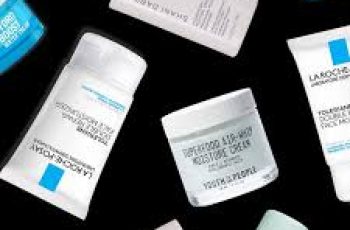
Can you use Retinol While Breastfeeding?
First of all, congratulations on the safe arrival of your new little bundle of joy. That was a long 9 months, but the reward was certainly worth it. The question you may have now, especially if you are an avid skincare user, are you able to use retinol while breastfeeding?
This can often feel overwhelming and sometimes quite daunting when it comes to finding the best things to use that remain safe for you and your baby. Therefore, before you continue reading today’s blog post, I strongly advise you consult with your doctor before introducing new skincare ingredients or products into your daily routine.
So, without further a due, let’s dive in and find out more about using retinol while breastfeeding.
Why can you not use retinol while breastfeeding?
Due to retinol being one of the most potent skincare ingredients, it is often considered a controversial choice whilst pregnant or breastfeeding. This is because even when it is applied topically it can be absorbed into the bloodstream and result in multiple effects and problems to the child, whether it is born or not.
With the number of birth defects retinol can cause to the fetus when used or taken during pregnancy. When it comes to breastfeeding and using retinol, there is no scientific evidence suggesting why it’s considered a bad idea to use when breastfeeding. But for peace of mind and understanding that the negative effects of retinol can have on babies, it may be a good idea to avoid using any form of vitamin A or retinoid enriched products until your baby is weaned fully and no longer at risk.
What skincare ingredients to avoid while breastfeeding?
As you may have guessed, it’s not just retinol that should be avoided when breastfeeding. Other products such as makeup, sunscreen, and blemish fighting ingredients should be avoided. Here are some examples of ingredients to give a miss until you have finished your breastfeeding journey.
Retinol
Retinoic acid
Retin-A
Retinoids
Beta Hydroxy Acid (BHA)
Salicylic Acid
Diferin
Oxybenzone
Benzoyl Peroxide
You will be able to find these ingredients listed on the packaging, but if you have any concerns consult with your doctor before applying any products to your skin. Ideally the best skincare ingredients to use whilst pregnant and breastfeeding are those considered non-comedogenic which basically means they do not clog the pores. I’ll be explaining more about this in the next section of today’s post.
What skincare can I use while breastfeeding?
Now, if you had yourself a well-established skincare routine before pregnancy, chances are you’re itching to crack it back out and slather it all over the skin. Heaven knows you’re in need of your all-time favourite serums and lotions after those late night and early morning feeds. The only problem is, it isn’t just pregnancy you need to be cautious with when it comes to applying formulas to your skin. As I have already suggested there are some ingredients that should be avoided completely, and I understand how this may feel disheartening, especially if you are desperate to reap the rewards of retinol again. Not to worry as I will now share with you some safe and effective alternatives to use during breastfeeding.
Swap Retinol for Peptides
There’s no denying that if you are wanting a rapid and impressive way of combating signs of ageing, there really is nothing as potent as retinol. Having said that it is strongly advised to not use any form of vitamin A, so the next best thing is, peptides. Peptides are chains of amino acids which work in the lower layers of the skin and provide a boost in collagen production and elastin. This results in the skin looking plumper, youthful, and full of bounce without the worry of harmful side effects of retinol for you and your baby.
Swap Salicylic Acid for Lactic Acid
As effective as salicylic acid is at combating spots and breakouts, the potent BHA is recommended not to use during pregnancy or breastfeeding. Making the switch to lactic acid will still provide you with similar exfoliating benefits, because the molecular size of lactic acid is very large meaning it is unable to penetrate too far into the skin and cause irritation and other unwanted reactions.
Other highly beneficial skincare ingredients to use whilst breastfeeding, are hyaluronic acid, niacinamide, vitamin C, vitamin E and nourishing oils, such as avocado. Can I use retinol while pregnant? No, it is advised to not use retinol at all whilst you are pregnant. Once the retinol absorbs into the blood stream there will be several defects causing damage to the developing fetus. If you have any concerns with any skincare formulas you are applying, stop using them and consult with a doctor to ensure you are safe to continue using them in your daily routine. What does retinol do to babies? Retinol when applied topically or ingested in the form of a supplement will cause a number of problems for the developing embryo and fetus, often leading to miscarriage, premature delivery, and many more birth defects, more commonly known as fetal retinoid syndrome. The reason retinol causes these problems is due to the increase of vitamin A. This vitamin is essential for the body to function properly and helps regulates cellular movements, but with excessive amounts exposed to an embryo will result in teratogenesis, which causes congenital anomalies and disorders. When should I stop using retinol before pregnancy? You may be pleased to hear that it only takes 1-2 days for any remaining traces of Retin-A to remove itself from the body. If you are planning to conceive, I would suggest you stop using your retinol product for a least a week, just to be on the safe side. You are then able to reintroduce retinol back into your daily skincare routine once your baby is fully weaned or you have chosen to no longer breastfeed. There you have a little more information about using retinol whilst breastfeeding. As I have already mentioned, it is important you consult with your doctor to ensure what you are using is safe for you and your baby. Don’t forget to come and follow us on Instagram!
DQH Can I use salicylic acid first and then vitamin C?
It’s easy to create a skincare routine, but knowing how to use it is another thing entirely. In most cases, if you’re not getting the desired skin results, it could be due to the layering of conflicting ingredients. So, is it possible that salicylic acid and vitamin C are such ingredients? Or are these active ingredients the duo that’s been missing from your skincare routine? If you want answers, stick around because today we are going to explain the benefits of salicylic acid and vitamin C and how they can be used in your daily life.
What are the benefits of salicylic acid for skin?
Salicylic acid is one of the most commonly used beta hydroxy acids and is favored by many people with oily, acne-prone skin. This acid is derived from willow bark, and unlike its water-soluble relatives (called alpha-hydroxy acids), salicylic acid is oil-soluble, which means it can penetrate deeper into the lower layers of the skin. Once it reaches the lower layers, it can help unclog pores of excess sebum, dirt, bacteria, debris, and impurities. This results in clearer skin tones and greater definition.
Not only does salicylic acid benefit the underlying layers, but the outer surface of the skin benefits as well. When applied to the skin, salicylic acid removes the buildup of dead skin cells. This is accomplished by breaking the bonds that hold dead cells to the surface. Over time, this can cause the complexion to look dull and prone to acne, blackheads, and other blemishes.
If you’d like to learn more about salicylic acid and how it can improve your skin, check out this dedicated blog post from a beauty insider.
What are the benefits of vitamin C for skin?
Vitamin C is considered one of the most powerful antioxidants, which means it is very effective at fighting free radicals and preventing them from causing further skin damage. Examples of free radicals include pollution, central heating, UV rays and harsh climate. They attack proteins, fats and cell membranes as soon as they come into contact with the skin, causing signs of premature aging such as fine lines and wrinkles as well as hyperpigmentation, flaky patches of skin and loss of elasticity.
Many people usually prefer to use vitamin C in their morning routine as this ingredient gives the complexion a radiant glow. You’ll also find that vitamin C can target areas of hyperpigmentation, plumping the skin and reducing the appearance of fine lines and wrinkles.
The thing about vitamin C is that there are a lot of outdated studies going back to the 1950s that describe vitamin C as an unstable skin component. Thanks to improvements in modern technology, this is no longer the case as all products now contain a stable form of vitamin C.
Visit The Beauty Insider to learn more about vitamin C. So please check out our blog post.
Can I use salicylic acid first and then vitamin C?
Yes, you absolutely can. In fact, it’s thought that using salicylic acid before using vitamin C ensures it penetrates faster and works faster.
This is an efficient way to utilize two power sources, and the reason has to do with pH. For example, the skin’s natural pH is about 4.7, making it slightly acidic. Salicylic acid and vitamin C are also both acidic, and you’ll find that vitamin C is absorbed quickly into the skin. Therefore, using salicylic acid beforehand can increase the acidity of the skin and allow vitamin C to penetrate into the skin faster.
While this is considered an effective way to combine two powerful ingredients, you need to be aware of your skin type and how it reacts to certain active ingredients. Even people with perfect, normal skin can experience skin sensitivity and irritation. Therefore, always consult a doctor or dermatologist before using any new products on your skin.
It’s also important to follow skin application rules. In this case, you need to use the product correctly to ensure you get the best results for your skin. If you’re not sure what I mean, the basic rule for skin is to start with the thinnest consistency and work your way up to the thickest consistency. This prevents a barrier from forming on the surface, preventing other active ingredients from penetrating the skin.
Can I use salicylic acid at night and vitamin C in the morning?
Yes, absolutely, this is considered the most effective way to get returns without any adverse side effects. This is because there is enough time between applications to ensure that the skin’s pH levels return to balance.
You’ll also find that Vitamin C is rich in antioxidants and is perfect for use in the morning to ensure your skin is protected and looking its healthiest. Due to the small size of salicylic acid molecules, it is an acid that is able to reach the deepest parts of the skin. While this is effective at keeping skin clear, it also increases the risk of irritation and photosensitivity. Therefore, many people prefer to use powerful BHAs in their evening routine without exposure to UV rays, pollution, or harsh weather.
Warning: If you avoid using sunscreen every day, none of these ingredients will do what your skin needs. The combination of chemical peels and powerful ingredients increases the risk of further damage to the skin’s surface. Use SPF 50 every day to keep your skin protected and your lipid barrier healthy, even on cloudy days, keeping your skin in top condition.


